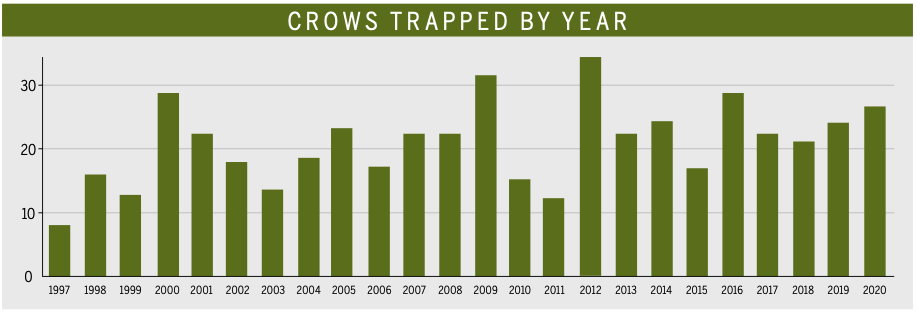Win CENS ProFlex DX5 earplugs worth £1,149 – enter here
Why predation control needs an integrated plan
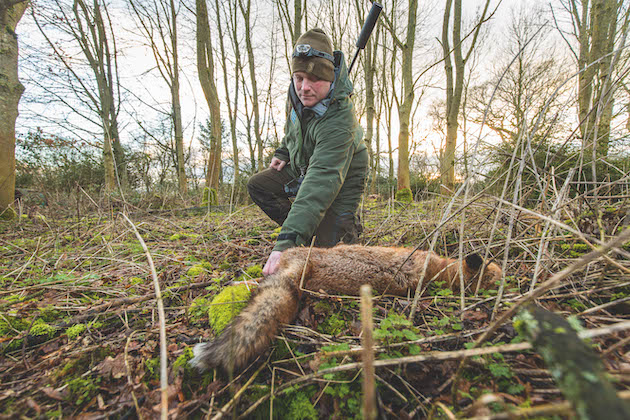 Tim Weston heads out to shoot a fox
Tim Weston heads out to shoot a fox
Let’s start by noting the words ‘predation control’, rather than predator. In managing game and wildlife, how many predators you kill is of no great relevance; rather it is the predation that you prevent that matters. As a consequence, shooting odd random predators is of no great moment. What is needed is an integrated predation control plan that addresses all the main issues for the species that we wish to protect.
Nesting wild pheasants can lose eggs and chicks to birds such as crows, magpies, rooks, jackdaws and jays, as well as mammals including rats, stoats, weasels, mink and foxes. All these mammals can kill hens on the nest, too, and foxes will take adult birds at any time of year.
Simply picking a single species to control, or even the two or three that you judge to be the most important, is not likely to have that much effect. If you suppress these, other generalist predators are likely to take up much of the slack, resulting in a much more modest impact than you would hope.
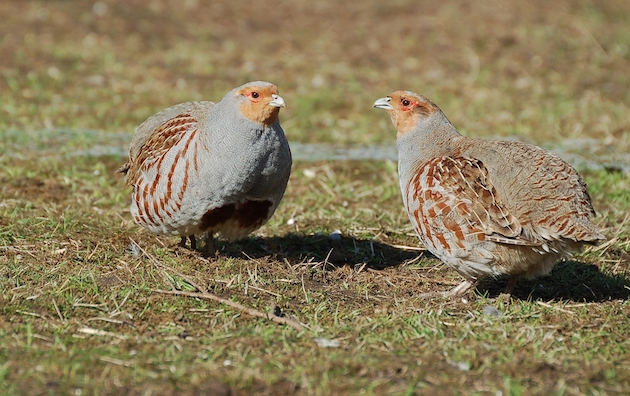
A well-planned and well-executed predation control plan will have long-term benefits for gamebirds, including the grey partridge
Bonanza
The RSPB has found this out at Otmoor in Oxfordshire. Having carried out great habitat works to restore the site for breeding waders, especially lapwings, predation became a big issue. Electric fencing to keep out ground predators allowed more lapwings to hatch, but the bonanza of chicks attracted red kites that carried off a significant number.
First things first. Before you set off at the predators, what are you trying to achieve? My little shoot is about producing enough wild pheasants for me to organise a few days of rough shooting for seven or eight Guns, without getting tangled up in a release programme.
Other shoots, however, will be running a grouse moor or partridge manor where all the game is wild. Meanwhile, most lowland shoots will be looking to encourage wild production of pheasants and/or redlegs, as well as releasing extras each autumn to guarantee their shooting. In each case, the optimum strategy is slightly different.
For example, those who are releasing game will have an extra late-summer focus on preventing predation of naive poults that have no parents to teach them the ropes.
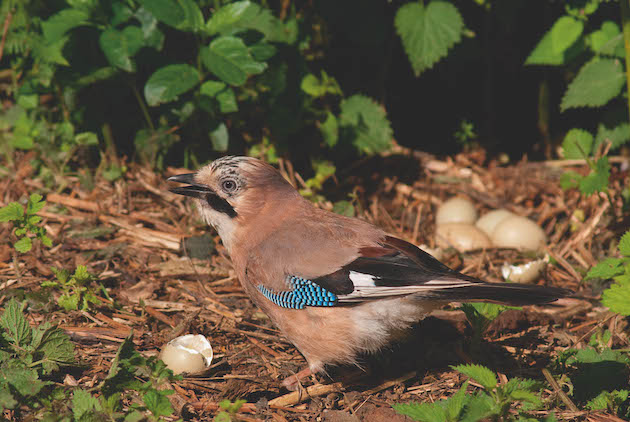
Jays are one of a number of birds known to predate on pheasants’ eggs and chicks
Sustainable control
“We sorted the foxes when we took over the shoot two years ago.” How often I have heard something like that when I have asked about predation control in my role as a GWCT game management adviser. Such ideas show a fundamental lack of understanding of how predation control works.
Nature abhors a vacuum, so whatever the temporary reduction in predator numbers, new colonists will fill the space, usually quite quickly. However, this does not imply failure. The temporary reduction takes the predation pressure off and — if this is at a critical time — it can make the world of difference.
So, the keeper who is ‘at the foxes’ around release time can reduce poult losses significantly, making a big difference to the percentage return at the end of the season.
Similarly, someone who takes predation control seriously during the nesting season can dramatically increase the productivity of wild game, through reducing the numbers of eggs and chicks lost, as well as protecting sitting hens. In both cases, this effort will need to be made every year at the critical time.
In most cases, the keeper will find that the numbers of the various predators killed are roughly similar year on year. In my own case, for example, my annual bag of crows has averaged between 20 and 21 for the past 25 years. There have been quite wide variations, but if you look at the bar chart below, I’m sure you will agree that there is no sign of long-term change. What this shows is that my control is entirely sustainable, with the crows bouncing back each year. I am simply taking an annual ‘crop’ of crows to enhance my crop of game, while also helping a significant suite of other wildlife, too.
Subsidised predators
Anyone who wonders whether it is acceptable to do this ought to ponder something else, too, and that is subsidised predators. The example of ravens and tortoises in the Mojave Desert of California may seem very distant, but it is very relevant.
Over the past few decades the Californian raven population has grown enormously, ‘subsidised’ by all sorts of foods provided by people, such as roadkill, plus scavenging from landfill sites, sewage works and intensive livestock farming. Ravens have probably always taken the odd young tortoise, but all these extras have caused a massive increase in predation rates across the Mojave, driving a steep population decline.
In the UK, the way we manage our very crowded countryside means we provide a similar support system. This maintains artificially high populations of foxes, corvids and probably others, such as rats, too. So not only is sustainable control of these species perfectly justified for game management reasons, you might also argue that we have a responsibility to try to redress the balance for other vulnerable wildlife. It’s interesting that gamekeepers are doing their best to deliver this service at no cost to the public purse, but right now the new open general licences for both England and Wales are making that much more difficult.
In the 1980s, the GWCT carried out a piece of groundbreaking research into the impact of predation control by a gamekeeper on the partridges of Salisbury Plain. The keeper, Malcolm Brockless, was simply asked to do his best to deal with the legally controllable predators using the normal tools — traps, snares, rifle and shotgun.
What this showed was that after three seasons there were four times as many wild greys on the experimental area compared with a similar patch 4km away. The treatments were then switched and three years later the autumn count on the new keepered area was a little short of four times that of the original patch. Controlled experiments like this are very expensive. You need to fund the keeper, in this case for seven years, then there is all the scientific monitoring. It is hardly surprising that there are not many such studies.
The GWCT’s upland predation experiment of the early 2000s was even more ambitious. It gave similar dramatic results for curlew, lapwing and golden plover, as well as grouse, blackgame and grey partridge.
What these experiments show us is that a well-planned predation control programme can be very effective. They also show that you need to address a suite of predators to have much effect. Being hard on foxes alone may well make a lot of difference to survival of released pheasants and redlegs, but if you want to help wild production, you need to cast the net wider.
Experiment
Most of the common predators have catholic tastes, making use of a wide range of prey, so if you address only one or a few species, the rest are likely to take advantage of at least some of what you produce.
If you want to do a reasonably good job, ask yourself what is at risk and when, then target your efforts accordingly. For most shoots, this means a spring campaign to protect nesting birds. It should start before the breeding season and target foxes, rats, stoats, weasels and corvids.
That is likely to include use of fox snares, tunnel traps, Larsen traps and corvid cages, as well as night shooting of foxes. Anything less is a relatively weak attempt and, while it may help, it will not reap maximum benefit, either for your game or other vulnerable wildlife.
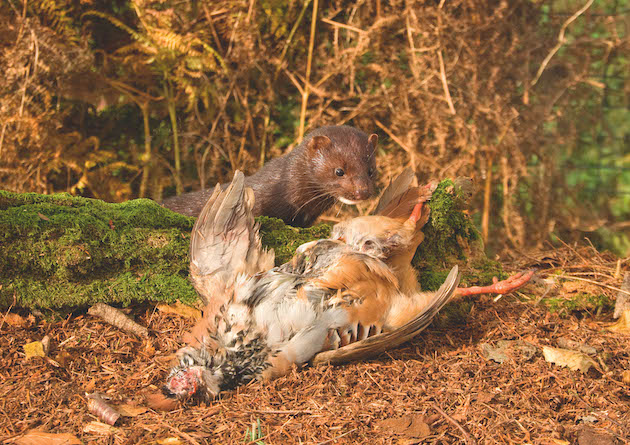
The American mink if a prolific predator, but GWCT mink rafts can be used to detect their presence
Do not forget the mink
Lest anyone wonders, mink are another predator to consider. If you have water on the shoot, chances are that feral American mink are visitors to your patch. They can be responsible for murderous mass kills in release pens and will take nesting game and wildfowl, not to mention other ground-nesting birds. The answer is to run a few GWCT mink rafts to detect their presence and then trap them quickly.
Related Articles
Get the latest news delivered direct to your door
Subscribe to Shooting Times & Country
Discover the ultimate companion for field sports enthusiasts with Shooting Times & Country Magazine, the UK’s leading weekly publication that has been at the forefront of shooting culture since 1882. Subscribers gain access to expert tips, comprehensive gear reviews, seasonal advice and a vibrant community of like-minded shooters.
Save on shop price when you subscribe with weekly issues featuring in-depth articles on gundog training, exclusive member offers and access to the digital back issue library. A Shooting Times & Country subscription is more than a magazine, don’t just read about the countryside; immerse yourself in its most authoritative and engaging publication.






